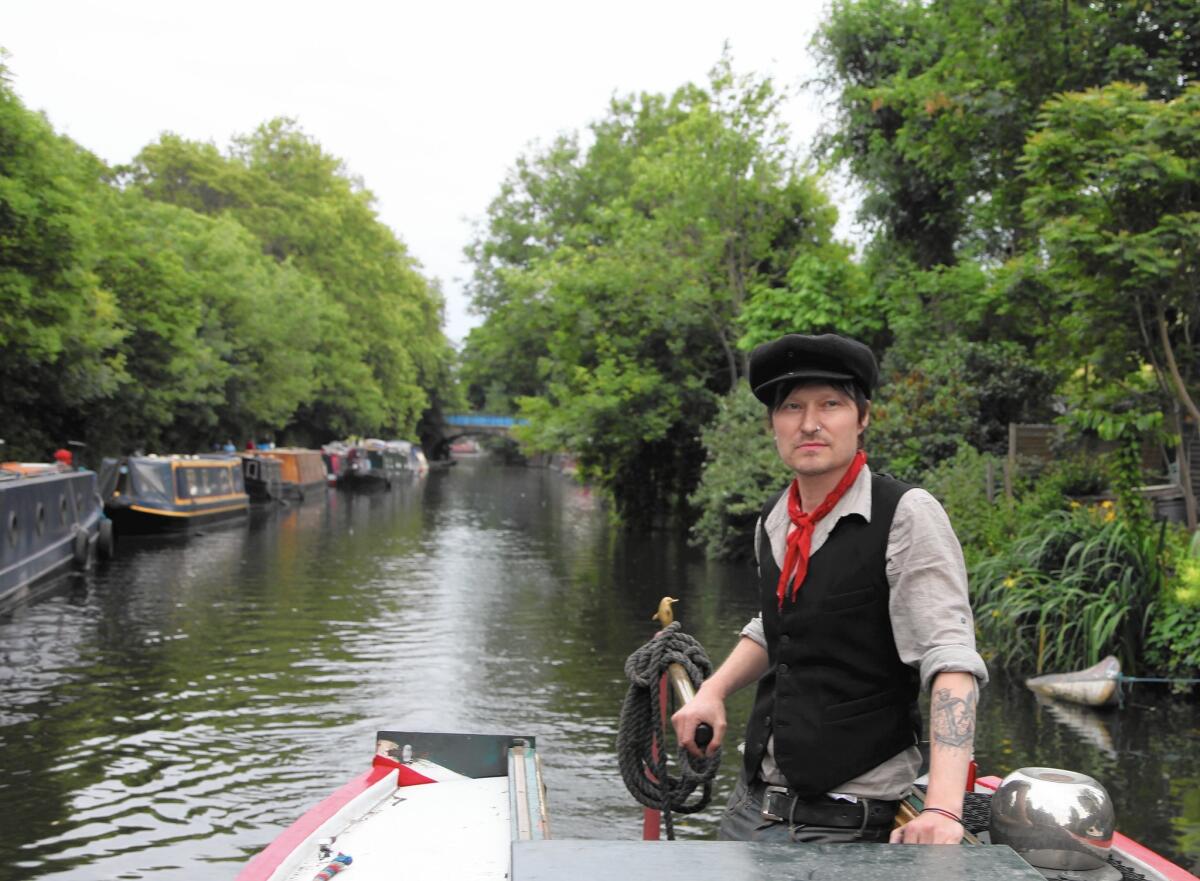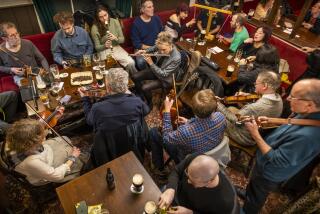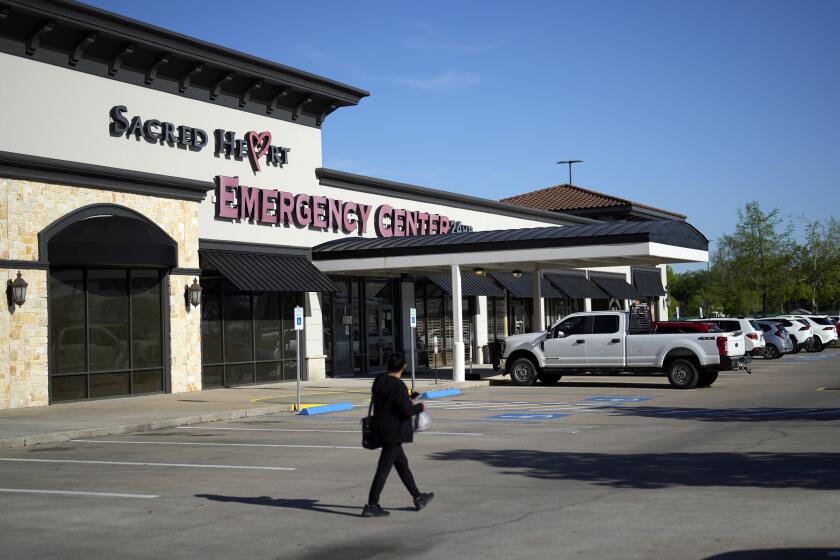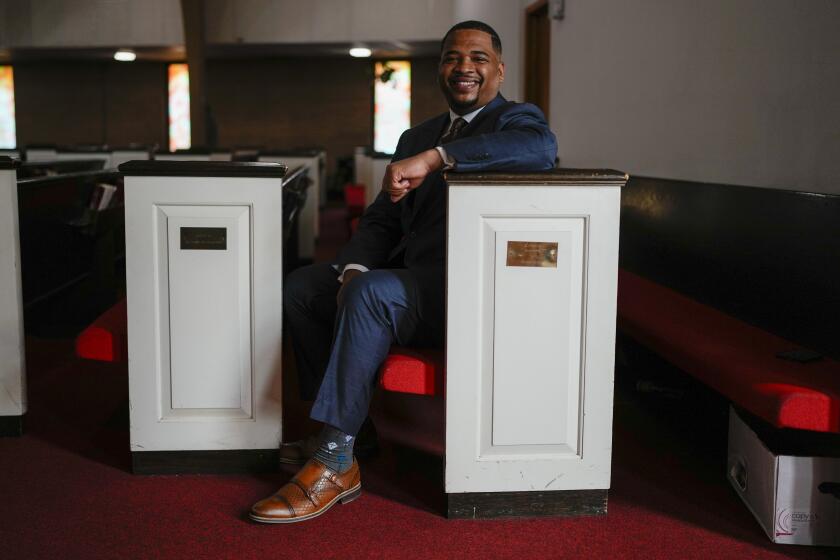Life in London’s slow lane, rolling on a canal

The sun briefly broke through the clouds as Toni Haimi pushed his boat away from the bank and headed south.
It took some skill to maneuver the 57-foot-long vessel — called a narrowboat to reflect a slim beam designed to fit Britain’s canals — but Haimi handled it with a confidence that betrayed his years of practice.
The din of his vintage 1952 engine reverberated, causing dog walkers, cyclists and pedestrians to turn their heads. A woman lifted an infant up to the railings and raised the child’s hand in a wave.
Haimi, 44, waved back and chugged on, passing ducks and swans and tranquil scenes that epitomized a lazy summer Sunday afternoon. It was easy to forget he was in overcrowded London.
That is precisely the allure of canal life for those drawn to the transient, more affordable lifestyle.
“I get pleasure out of the fact that I’m as self-sufficient as I can be,” said Haimi, a musician and band tour manager with an anchor tattoo on his left forearm. “As long as you’re on the grid, someone is controlling your life.”
NEWSLETTER: Get the day’s top headlines from Times Editor Davan Maharaj >>
The number of boats moored in the 60 miles of canals in the capital hit 3,255 in March, soaring from 2,175 five years ago. In a city where housing prices are skyrocketing, it’s easy to view it as a more cost-effective option.
Boats cost tens of thousands of dollars, on average, unlike the hundreds of thousands needed for a house. Fuel costs are usually minimal.
The 12-month license — issued for about $1,400 by the Canal and River Trust, which manages 2,000 miles of waterways in England and Wales — allows owners free mooring nearly anywhere along the canals for up to 14 days on a first-come basis, with double-parking allowed. The trust employs wardens who regularly patrol the towpaths to ensure that boats are not stationary too long.
There are a few permanent moorings around the capital, but they are typically sold with a boat and are far more expensive. Most narrowboat owners move in search of a new place to call home every few weeks.
As demand has increased, boat owners say the pressure to find a vacant spot has intensified. However, they’re also quick to point out that the lifestyle is not just a matter of economics; it’s a way of life you have to love and embrace.
Haimi offers precisely that advice to a couple walking their two dogs who helped him maneuver through a lock, a task that he can do solo, though he prefers a helping hand.
“Where do you go to buy one of those?” they ask.
“There are boats for sale all over,” he replies. “But it’s not an investment, it’s a lifestyle.”
Finnish-born Haimi abandoned land life for a narrowboat close to four years ago. He doesn’t think he will ever revert.
One day he could be living next to mansion blocks in the exclusive Little Venice neighborhood, where a townhouse costs more than $3 million. The next he could be near Hackney Downs, close to a large expanse of green space and a short walk from trendy shops and bars in east London.
On a recent Sunday, as Haimi took his newly purchased boat for a ride, he spontaneously decided to double park near a canal-side pub packed with hipsters drinking artisan beer and eating sourdough pizzas. London’s Olympic stadium loomed large on the horizon and street art adorned nearby brick walls.
“I could never afford to live pretty much anywhere around the canals,” he said. “I feel like I’m beating the system a little bit.”
Boat owners might be students who like the nomadic experience, retirees who love the simple life, or young professionals with small children searching for a cheaper way to raise a family without giving up their London jobs.
“My grandchildren are in London, my children are in London, I don’t feel like living anywhere else,” said Carolyn Partrick, 63, who used an inheritance to buy her wide-beam boat a year ago when she was forced to move from her south London home. A new apartment wasn’t affordable on her pension.
Like most boat owners, she uses solar panels throughout the summer for electricity and in winter says she can survive on $40 a week in gasoline, electricity and heating costs.
“I love being close to water all the time and it’s amazing to see all these huge weeping willows,” she said, taking in her view. “It feels very rural.”
A few years ago it was easy to find a spot to moor. Now in some of the trendier parts of London you might have to travel a few miles farther to find a vacant space, much like looking for a parking spot on a street.
In Hackney Downs, for example, there was an 85% increase in the number of boats from 2013 to 2014, and the Canal and River Trust says this is putting pressure on the system.
During the winter, the trust offers temporary moorings to those who don’t wish to move every two weeks when the temperatures drop and London’s overcast skies and short days render solar panels useless.
Wood burners can keep the interiors of the boats warm for several hours, but they have been known to go out in the middle of the night.
As Haimi came to end of his day boating, he moored and opened a bottle of wine. A lone Canadian goose swam within touching distance.
Haimi puffed on a cigarette and looked content in the knowledge that in a few days, the view out his window could be entirely different.
“A beautiful sunny day is nice, but if you want to get the sense of being on water it’s best at night,” he said. “The canal becomes quiet, you see the light reflecting on the water and everything becomes symmetrical.
“Slowing down, that’s the beauty of boating. Whatever you do in boating, you do it slowly.”
Boyle is a special correspondent.
More to Read
Start your day right
Sign up for Essential California for news, features and recommendations from the L.A. Times and beyond in your inbox six days a week.
You may occasionally receive promotional content from the Los Angeles Times.






